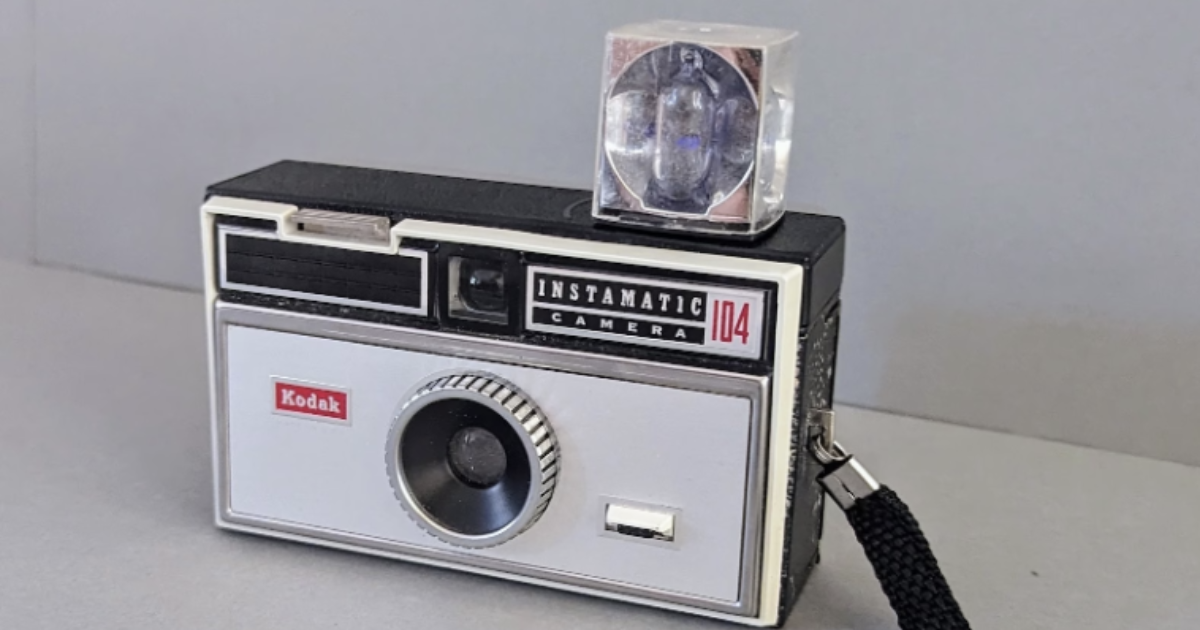The Ultimate Camera Hack of the Past You Won’t Believe!

Source: Etsy
In the grand tapestry of photography’s history, certain innovations stand out as pivotal moments that shaped the way we capture and preserve memories. The advent of flash cubes was undoubtedly one of those moments, ushering in a new era of convenience and accessibility in low-light photography.
Before the digital revolution, photography was a different realm altogether. Film cameras dominated the landscape, but they struggled when faced with low-light conditions. Enter the flash cube – a compact, ingenious solution that transformed the way photographers illuminated their subjects.
In the mid-20th century, flashbulbs were the primary method of artificial lighting in photography. However, these bulbs required manual replacement after each use, making the process cumbersome and interrupting the flow of photography. The flash cube changed this by ingeniously housing four individual flashbulbs within a rotating cube, allowing photographers to take multiple shots without the need for constant bulb changes.

Among the pioneers of the flash cube technology was the Sylvania Blue-Dot. This brand not only introduced the world to the concept of the flash cube but also left an indelible mark with its iconic blue-dot design. The blue dot served as a visual guide, ensuring that the cube was aligned correctly with the camera’s lens, thus guaranteeing proper illumination.
The Sylvania Blue-Dot flash cubes offered a level of convenience that was unparalleled at the time. Photographers no longer needed to fumble with individual flashbulbs or complex setups. The ease of use democratized flash photography, making it accessible to amateur enthusiasts and casual users alike.
Hot on the heels of the Sylvania Blue-Dot was the Westinghouse flash cube. This competitor in the flash cube market embraced the same fundamental concept but added its own touch of innovation. With a design that mirrored the rotating mechanism of the Sylvania, the Westinghouse flash cube provided users with a reliable and efficient source of artificial light.

Photographers who adopted the Westinghouse cubes appreciated the convenience of not only the rotating mechanism but also the reliability of the flashbulbs. These cubes became synonymous with hassle-free photography, a trait that contributed to their popularity.
The era of flash cubes was transformative in more ways than one. While they were a practical solution to an immediate problem, they also set the stage for the continued evolution of flash technology. As photography progressed, the principles of compactness, ease of use, and reliable illumination laid the foundation for modern flash systems integrated into digital cameras.
Nostalgia has a powerful pull, and collectors and photography enthusiasts today often seek out vintage flash cubes as cherished relics of the past. These tiny, unassuming cubes are reminders of a time when a simple revolution could redefine an aspect of photography and influence the course of its future.

The legacy of flash cubes is a testament to the power of innovation in the world of photography. These unassuming plastic cubes, with their rotating flashbulbs, changed the way we illuminated our memories. In an era where the digital reigns supreme, the flash cubes stand as symbolic artifacts that harken back to the analog roots of photography, evoking memories of a time when capturing a moment required a bit of magic in a cube that brought light to the darkness.
